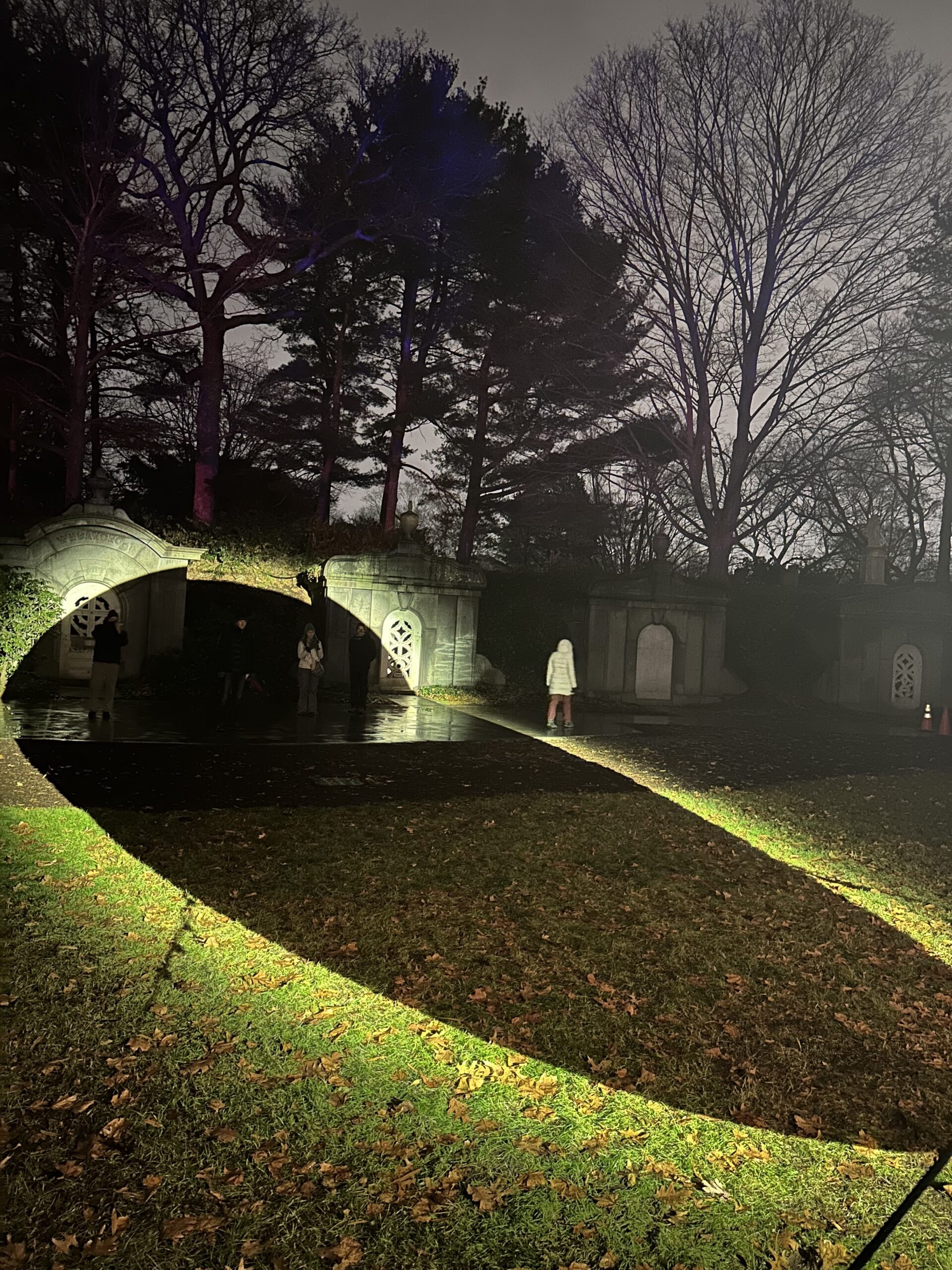 December 16, 2022. A night walk in Mount Auburn Cemetery, Deb catches me passing across the edge of a light circle into darkness. A beautiful Masary Studio’s solstice production leading us into these most mysterious days of winter.
December 16, 2022. A night walk in Mount Auburn Cemetery, Deb catches me passing across the edge of a light circle into darkness. A beautiful Masary Studio’s solstice production leading us into these most mysterious days of winter.
This image brings me back to the early pandemic, riding across the city for hours on my bicycle. I spent a lot of time in cemeteries. In fact, I volunteered for a time as a Findagrave.com sleuth. Strangers would send me a request to look for a long-dead relative. I’d jump on my bike and be off with my maps of Forest Hills, Cedar Grove, or Mount Hope, send them pictures of what I found. If I found. It can be quite difficult to find a grave.
I hesitated to tell anyone about these excursions. It seemed strange, and I couldn’t explain what compelled me. My time in cemeteries, in the midst of a pandemic, brought home the temporal nature of names and epitaphs carved into headstones, of memory, of whatever significance any of us may have in our lifetime. DNA is passed along. Still, few are remembered by their grandchild’s children.
I ponder further in an essay, Toward a New Poetics of Journalism, commissioned by the Nieman Journalism Lab.
In 125 years, when someone comes looking for us, what will they find? The hardscape — granite monuments, bridges, even mountains and rivers eventually dissolve or give way to something unrecognizable, unverifiable. Journalists as anthropologists, social scientists, forensic experts — as with poets — leave a discoverable trace for those wanting to understand where they’ve come from. Let’s be generous with what we leave for them.
Find the full piece here.
